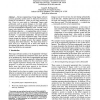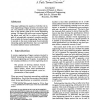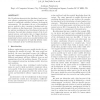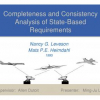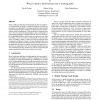ICSE
1995
IEEE-ACM
14 years 7 months ago
1995
IEEE-ACM
— Reverse engineering of large legacy software systems generally cannot meet its objectives because it cannot be cost-effective. There are two main reasons for this. First, it is...
ICSE
1995
IEEE-ACM
14 years 7 months ago
1995
IEEE-ACM
ICSE
1995
IEEE-ACM
14 years 7 months ago
1995
IEEE-ACM
-- While a large fraction of application code is devoted to graphical user interface (GUI) functions, support for reuse in this domain has largely been confined to the creation of...
ICSE
1995
IEEE-ACM
14 years 7 months ago
1995
IEEE-ACM
This paper addresses the question of whether the reverse engineering of legacy systems is doomed to failure. Our position is that the answer is highly dependent on the specific go...
ICSE
1995
IEEE-ACM
14 years 7 months ago
1995
IEEE-ACM
The ViewPoints framework for distributed and concurrent software engineering provides an alternative approach to traditional centralised software development environments. We inve...
ICSE
1995
IEEE-ACM
14 years 7 months ago
1995
IEEE-ACM
A requirement is a desired relationship among phenomena of the environment of a system, to be brought about by the hardware/software machine that will be constructed and installed...
ICSE
1995
IEEE-ACM
14 years 7 months ago
1995
IEEE-ACM
As software developers we are engineers because we make useful machines. We are concerned both with the world, in which the machine serves a useful purpose, and with the machine i...
ICSE
1995
IEEE-ACM
14 years 7 months ago
1995
IEEE-ACM
ICSE
1995
IEEE-ACM
14 years 7 months ago
1995
IEEE-ACM
Many would argue that future breakthroughs in software productivity will dependon our ability to combine existing pieces of software to produce new applications. An important step...
ICSE
1995
IEEE-ACM
14 years 7 months ago
1995
IEEE-ACM
This paper presents a compact Petri net representation that is e cient to construct for concurrent programs that use explicit tasking and rendezvous style communication. These Pet...
